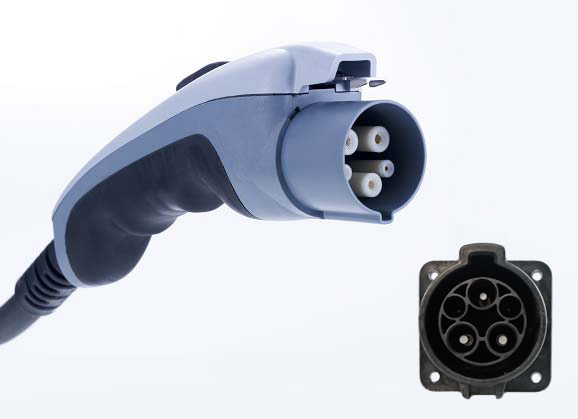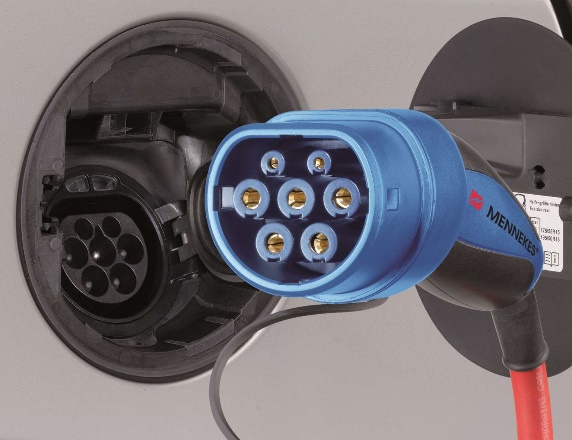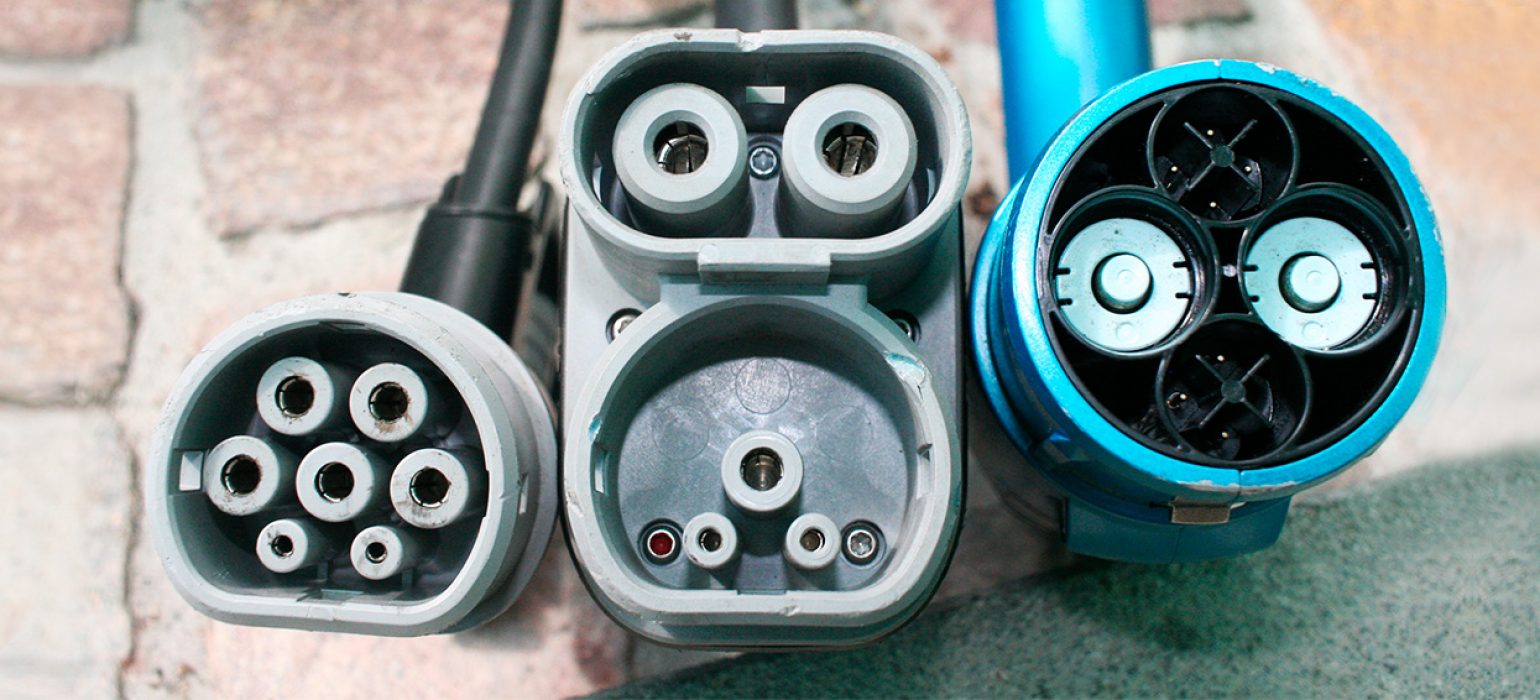Electric vehicle connector types
A frequent doubt that appears when you would like to purchase an electric or plug-in hybrid vehicle is the connector type from the charger to the vehicle. There is no single standard, and in addition, if we want to make AC charging or DC charging, the connector type will be different.
AC Charging
To charge with alternate current there are two cable types, which has to be chosen depending on the vehicle manufacturer. This connector types are used for the charging modes 2 and 3 already explained in our article “Where and how can I charge my vehicle?”.
Type 1 Connector
This connector type originates from the Asian and North American market.
It is found in the following car manufacturers: Citroën, Chevrolet, Ford, Kia (until 2018), Mitsubishi, Nissan NV200, Nissan Leaf previous to 2018, Opel (until 2018), Peugeot and Toyota.
This connector allows the user to charge at maximum 7,4 kW and only in one phase grid facilities.

Type 2 Connector
This connector type originates from Germany.
It is found in the following car manufacturers: Audi, BMW, BYD, Mercedes-Benz, Renault, Smart, Tesla, Volkswagen, Nissan Leaf from 2018, Kia from 2018, and Volvo.
This connector is compatible both with one phase or three phase grid facilities. The maximum charging power is 22 kW in three phase and 7,4 kW in one phase.

DC charging
The connectors used for this charging speed are usually found in the public charging stations, because they are used to provide high power rates. It has to be taken into account that, in some vehicles the socket to plug these type of connector to the car, is only offered as an option.
Besides, this charging mode is used to charge the vehicle only up to 80% of battery capacity.
This connector types are used for the charging mode 4, which is explained in our previous article.
CHAdeMO connector
The CHAdeMO Connecter was created by The Tokyo Electric Power Company (TEPCO), Nissan, Mitsubishi, Fuji Heavy Industries (Subaru) and Toyota. It’s the only connector type that allows bidirectional charging at this moment.
This connector is used by the following manufactures: Citroën, Kia (before 2018), Mitsubishi, Nissan, Peugeot and Toyota.
It can charge up to 100 kW, filling the battery of a Nissan Leaf up to 80% in approximately 30 minutes.

COMBO/CCS Connector
The COMBO/CCS Connector is as well known combined charging system. It is a combination of type two connector, with the adaptation for the fast charging, adding to the plug, a connection to supply directly DC current to the vehicle.
This type of connection is becoming obligatory in Europe, because nowadays any mode 4 charging station compulsory needs to have at least a COMBO/CCS connector available (CHAdeMO it’s not mandatory).
Allows charging powers up to 350 kW.

Wallbox Proposal
Wallbox offers in all of its devices for normal charging both type 1 or type 2 connectors, offering the maximum domestic charging power: 7,4 kW in one phase grid facilities and 22 kW in three phase.
As well soon will be available a DC Domestic charger both with CCS or CHAdeMO connector. This last one will allow bidirectional charging with Nissan and Mitsubishi vehicles.
